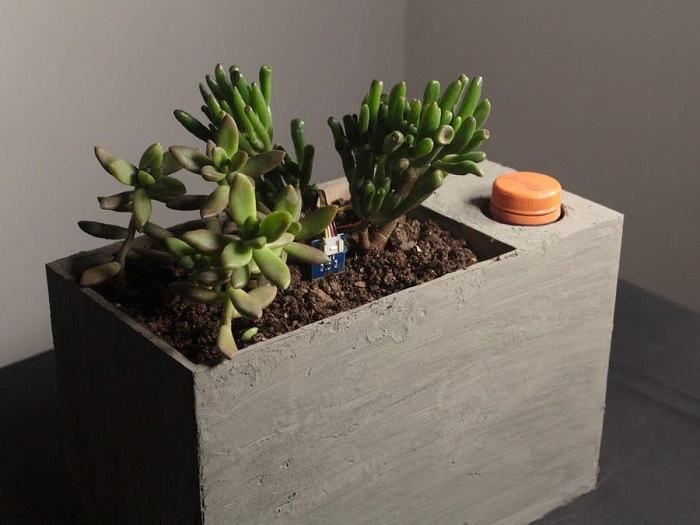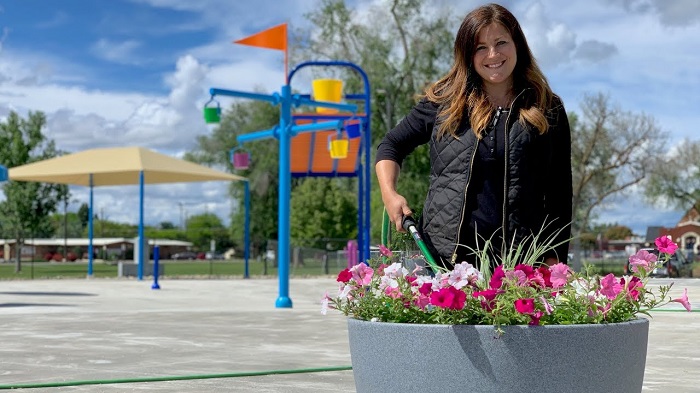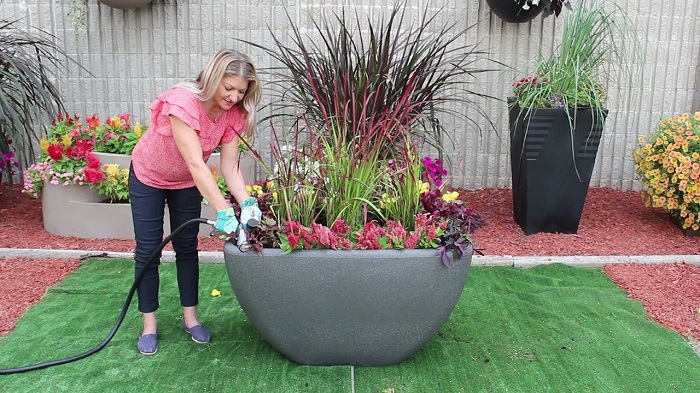Your entry area is the last thing you see when you leave your home and the first thing you see when you get home. It’s also the sight that welcomes people when they enter your home. We all know how important first impressions are, meaning it’s vital to design the entry space well and make it as cosy and inviting as the rest of your home.
However, this part of your home often gets cluttered and neglected. Whether you’ve got a spacious hall or a narrow, cramped hallway, how can you make your entry area look stunning? Putting a console table and decorating the space around it is a brilliant way to do it.
Home
Bathroom Drains: Steps to Choosing the Ideal Basins and Wastes for Your Bathroom
Of all the rooms in a home, it’s safe to say that bathrooms probably have the distinction of simultaneously being the most personal, the most permanent, and critically, the most important.
It’s also a room where it’s easy to concentrate on the largest of fixtures, at the risk of ignoring the tiniest of fittings … and this is especially true with the wastes installed in water basins. Every basin needs one to either block or channel off tap water. Despite their very durable demeanours though, the effects of mineral-rich water, aggressive cleaning solutions, and just the plain wear and tear of decades of usage mean that you’ll eventually have to replace it.
Step Up Your Lighting Game with the Right Table Lamp
Decorating your home or apartment can be exciting, but it can also be challenging. There are numerous choices to be made, including design style, colour, and price range for everything from furniture to rugs and accents to lighting. The best way to light a home is to use a layered lighting scheme with various light sources. As a result, the table lamp is an absolute must-have for any well-lit space. Besides its function, the double dose of efficiency also includes a dash of style.
Laundry Room Done Right: Make Washday More Pleasant and Convenient
The utility room is not a space in your home that should be underestimated. The utility or laundry room is serving as the engine of any homeowner’s house fortunate enough to have one. It may be where you have to undertake your not so exciting house-keeping chores or store practical items.
Creative Garden Shed Uses: Simple Steps to Make the Most Out of Your Garden Shed
There are many benefits of having a garden shed in our garden or backyard. They’re the ultimate storage space addition that we usually lack in our home space and the best way to keep our outside area neat and organised. While the most apparent use of a garden shed is providing us with the storage space we need, many other benefits are not so obvious.
Reading about the many ideas of using a garden shed can inspire us to reconsider our garden area and make changes. These changes might be just the right thing to do to make the most out of our garden or yard. Here are some practical steps to achieve the garden look you’ve dreamed of.
1. Choose a Location
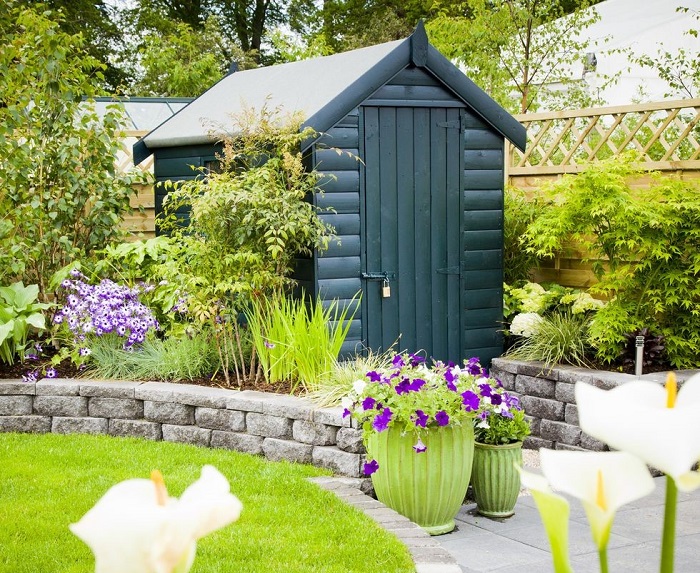
Finding the perfect spot in your garden for building a garden shed is the first step. It will help you determine the size of the shed later on. To do that, have a look at your yard. What is the ideal spot for your shed? Do you want it to stand out as a focal garden point, or do you want it to blend in?
Alignment is another thing you want to consider when finding the perfect place for your garden shed. You need to ask yourself which side you want to have access to. Also, what type of door would be the best for this location? Do you want it to have windows? To make the most out of your shed, you need to have these things in mind.
Before you determine the final location, make sure you can easily access it. Consider building pathways to it if possible or simply narrowing the land around it. You don’t want anything like handling bumps at the end of your project to ruin it for you.
2. Decide on the Size and Material
Garden sheds come in a variety of sizes. The smallest ones come in dimensions of 0.8×0.8m and up, and some of the largest can be wide up to 6m and deep up to 3m. For most homes, a 3m shed is big enough for their storage needs but not too bulky to fit in the yard. That’s why a garden shed 3x3m is the most popular size choice.
When it comes to materials – wood, metal, and plastic are the most commonly used ones. Wood sheds are the sturdiest and bulkiest. Plastic ones are lightweight and easy to move, making them a great choice if you haven’t decided on the final spot yet. Metal garden sheds are something in between and are widely used by many garden owners. They provide the quality and space needed for storage and many other uses of garden sheds.
3. Pick a Creative Use for Your Garden Shed
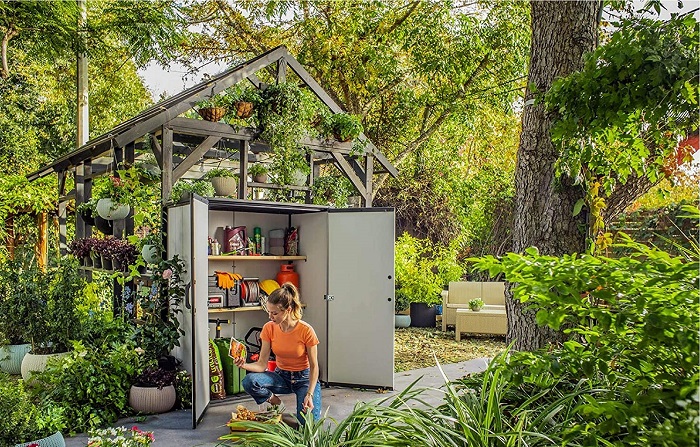
After you decide on the technical things like location, sizes and materials, here comes the most exciting step of the process – picking a theme for your garden shed. You’re probably asking yourself, ‘what can I turn my shed into?’ There are many things sheds can be used for, especially bigger ones, such as a garden shed 3x3m. Here are some of them.
Home Gym
How often have you wished you had a bigger space to work out? Or you wanted to start exercising, but you haven’t found the right spot? By turning your garden shed into a home gym, you’ll have the perfect space for a workout in peace. Just put all the workout equipment there, and you’re ready to go. If you have access to electricity, you can even put a TV in and do your online fitness classes there.
Home Office
Working from home has become the case over the last several years. If you find it hard to concentrate and be productive in your house, you will enjoy the peace that your garden shed can provide. The greenery scene of your garden can be exactly what you need for that little boost of daily creativity.
Workshop
Do you have hobbies or crafts you would use some extra space for? Then turn your garden shed into a workshop. No matter the activity, you can store your supplies in your shed and not worry about putting them off every time you finish or cleaning the mess you make. Having a place you can engage in messy work without taking care of it can add a therapeutical effect to your DIY projects.
She/He Shed
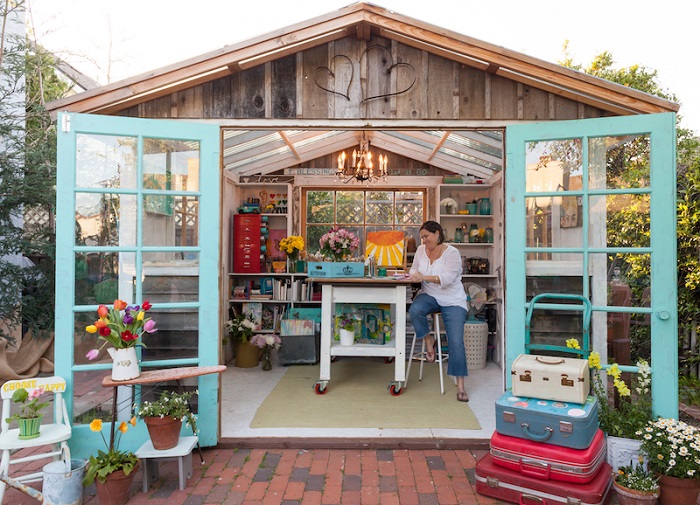
She sheds, and man caves have become very popular in the last couple of years. Turning your shed into one can be very useful and provide you with some free space for a daily hideaway every time you get overwhelmed. Building she (or he) shed should be a process of highest space personalisation. This means looking into your inner self when looking for ways to set a mood and decoration. Ask yourself what calms ad relaxes you and what you see as the best way to take care of yourself when defining the purpose of your she shed. It can be a cozy reading corner, a movie theatre, a pub, or a bar.
Playhouse
Having little children can be exhausting. The lack of sleep you get and the constant worry to keep them safe and alive can make mums tired. And on top of that, cleaning the mess their children make daily. If you feel tired of cleaning the toys and the mess after your kids, how about moving them to a separate play area outside your home? The kids will enjoy having their own space to play, while your house will be less messy.
Garden Room
Building a garden shed is a great way to make your garden a sanctuary. If you need an outdoor space where you can drink a coffee and take a break from gardening, you can turn your shed into a garden room. Consider making it more open if you want to enjoy the garden view and lounge in peace.
Step Up Your Wedding Décor Game with the Perfect Chair Covers
If this is your first wedding, you might think that chairs are just chairs and that you’ll use the ones provided by the venue. Unfortunately, most venues are unlikely to offer seating that matches the décor of your big day. In such cases, you can’t change the unsightly seating, but you can dress up your wedding chairs with beautiful covers and create an effortlessly chic wedding look everyone will talk about.
Beginner’s Guide to Air Ducting
As Aussie homes are getting bigger, air-conditioning systems are getting more sophisticated. A popular choice for heating or cooling all those rooms is ducted air conditioning. As the name implies, this consists of a network of ducts to regulate room temperatures. The benefit over other air conditioning types is that the whole house can be cooled or heated at the same time. In addition, ducted units (fitted with zone motors and controllers) can heat and cool multiple rooms simultaneously.
Modern Self Watering Planters Guide: Cultivate Some Personality Indoors and Showcase the Beauty of Plants
There’s nothing better than a lovely flower garden to add aesthetic charm and colour to your house. A variety of flowering plants give a wealth of blooms and textures to the area where you live. Although the most popular option for growing flowers is to plant them in regular pots and planters, many people are opting for self-watering planters due to their high levels of convenience.
If in your busy life you have given up on growing your own flowers, veggies, and all sorts of plants, I’m sure you will like the idea of having a self-watering container in your home or trading/office. No more hoses, watering cans or dry, dying plants!
How Self-watering Planters Work?
Self-watering planters come in many different styles, but they all have the same basic design. Each pot has two chambers: a plant pot and a reservoir below it that holds water. The plant pot is suspended above the reservoir, keeping the soil from sitting in water. The plant absorbs water when it needs it, drawing it up from the reservoir through wicking action.
A tube delivers water to the reservoir, either at the bottom or through an overflow hole on the side of the pot. Some pots also have tubes for removing excess water from the reservoir so you can keep them topped up at all times without the worry of overwatering.
The tube that delivers water to the reservoir is usually attached to a pump that keeps it full, but you can also fill some containers with water by hand. Some pots that have tubes that deliver water directly to the soil are called wick planters because they use wicking action to draw moisture up into the soil.
How to Use Self Watering Pots?
Self-watering pots are a great way to start a new hobby or to add some flair to your home. If you are tired of the same old look of your plants, it is time for a change. You can do this by using modern garden planters with innovative design consisting of a large reservoir at the bottom. The pots have holes along the bottom to allow water to flow up into the potting soil, which then helps the plant stay well-hydrated and healthy.
You can find different self-watering pots with different designs, including rectangular ones, octagonal ones, and circular ones. Some self-watering planters are made from clay whereas others from plastic. Make sure you read the labels carefully before purchasing one because you will want to find out what the pot is made from and how big it is.
Tall Pots for Wide Plants
If you want to grow a tall plant in a self-watering pot, you will need a tall one so that there is enough room for your plant’s roots. The holes on these pots also tend to be spaced farther apart so that they can accommodate larger plants as well. Make sure that the pot has drainage holes in case water gets trapped in the reservoir at the bottom of the pot.
Clay vs Plastic Pots
When choosing between plastic and clay modern garden planters, many people choose clay pots because they do not have any chemicals used during manufacturing and these kinds of pots have been used for centuries by farmers and other growers. Clay pots are going to be more expensive than plastic ones, but they are more durable and do not let moisture escape from their surfaces easily. Plastic ones will also be lightweight, shatterproof, inexpensive and resistant to mould. If you like these properties, you should look for injection-moulded HDPE planters that are BPA-free and safe for food.
Self-watering Pots are a Good Bet for Indoor as well as Outdoor Plants
As we know, self-watering pots are great for growing plants indoors. But did you know that they can be used outdoors? They’re perfect for container gardening in the summer, where you can place them on your porch or patio and water whenever you like.
One of the best things about self-watering pots is that they save time and money. You won’t have to worry about forgetting to water your plants or having to lug buckets of water from your sink to your planter every day. Just fill-up the reservoir with water and let it do its job!
These stylish modern garden planters give you a whole new outlook on gardening. While with trees you need to hire specialists to take proper care of them, with self-watering pots you can simply place your plant in the pot and let it go! Plus, with their attractive designs, these pots will enhance any porch, patio, or garden area. You can use self-watering containers for just about any type of plant, from herbs and vegetables to flowering plants!
Planting in a Self-watering Pot
There are many different types of plants, varying in size and shape. Some of them grow fast, like herbs, while others are slow-growing, like cacti. Regardless of what type of plant you choose, you should think about the space your plant will take up once it starts to grow.
That’s why it’s important to pick indoor modern planters that are the right size for your plants; otherwise, you might end up having to repot every few months. When transplanting a plant into a new container, make sure that the drainage holes are not covered by soil and that the container has drainage holes at its bottom. This way, excess water will be able to get out and leave some room for oxygen in the soil.
If you don’t provide this gap in your pot or planter, the roots won’t be able to breathe and the soil will end up getting compacted, hindering water drainage and slowing down root growth. Once you’re done planting your new plant, fill up the tank with water and check regularly to see if it needs more water or if it has leaks that need repairing.
To Sum Up
Not only are self-watering planters an attractive option for a variety of indoor and outdoor uses, but they are also more cost-effective and convenient than regular pots and planters. If you have been unsure of what type of container would be best for your home or office space, consider the self-watering containers. They are convenient, economical, and easy to care for, with low maintenance requirements.
Step up Air Quality at Home: How to Purify Your Indoor Environment Naturally
What you may not have realized is that the air we breathe inside our homes is far more contaminated than the air outdoors. Why? Because our everyday products contain contaminants that we are oblivious to. Be it the dust that accumulates on the inside of our drawers from our beds, the paint on our walls, the ingredients in our shampoos, and lotions – all of these include chemicals and poisons that are causing us harm in the long term.
Wall Hanging Letter Box: The Perfect Accessory to Step Up The Looks of Your Home Exterior
For centuries, mail has been delivered to the front door of homes. But in today’s era where time is precious and we all live on-the-go, it can be a hassle for homeowners to stop what they’re doing and answer the door every day. What if there was an easier way?
Wall letterboxes are one option worth considering! A wall mounted mailbox is a wall hanging postbox that usually consists of a door or flap. Also known as wall hanging, these letterboxes are a decorative way to receive and send mail. They come in a variety of styles so you can find one that is suited for your home exterior.
RECENT POSTS

